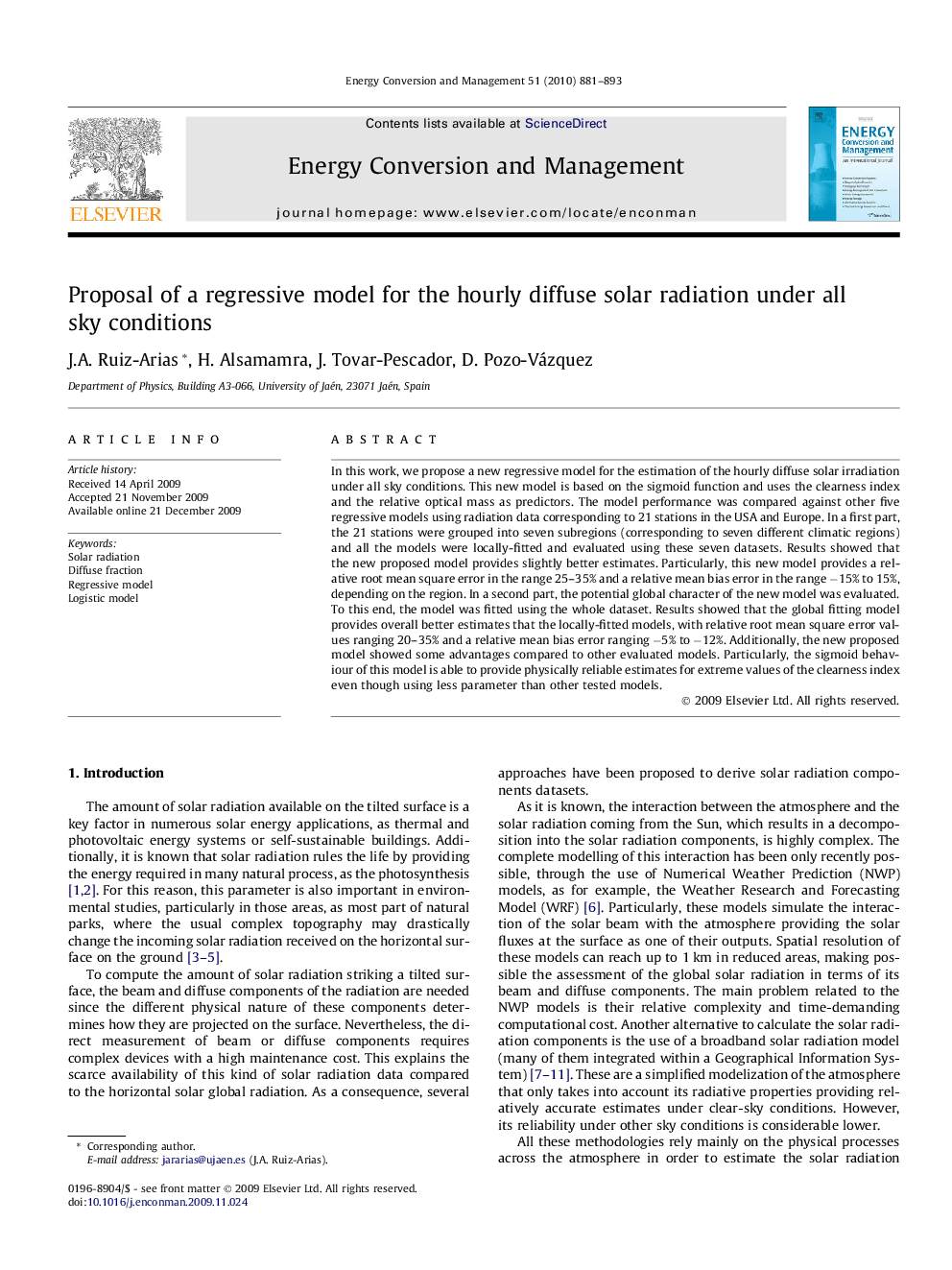| Article ID | Journal | Published Year | Pages | File Type |
|---|---|---|---|---|
| 764871 | Energy Conversion and Management | 2010 | 13 Pages |
In this work, we propose a new regressive model for the estimation of the hourly diffuse solar irradiation under all sky conditions. This new model is based on the sigmoid function and uses the clearness index and the relative optical mass as predictors. The model performance was compared against other five regressive models using radiation data corresponding to 21 stations in the USA and Europe. In a first part, the 21 stations were grouped into seven subregions (corresponding to seven different climatic regions) and all the models were locally-fitted and evaluated using these seven datasets. Results showed that the new proposed model provides slightly better estimates. Particularly, this new model provides a relative root mean square error in the range 25–35% and a relative mean bias error in the range −15% to 15%, depending on the region. In a second part, the potential global character of the new model was evaluated. To this end, the model was fitted using the whole dataset. Results showed that the global fitting model provides overall better estimates that the locally-fitted models, with relative root mean square error values ranging 20–35% and a relative mean bias error ranging −5% to −12%. Additionally, the new proposed model showed some advantages compared to other evaluated models. Particularly, the sigmoid behaviour of this model is able to provide physically reliable estimates for extreme values of the clearness index even though using less parameter than other tested models.
